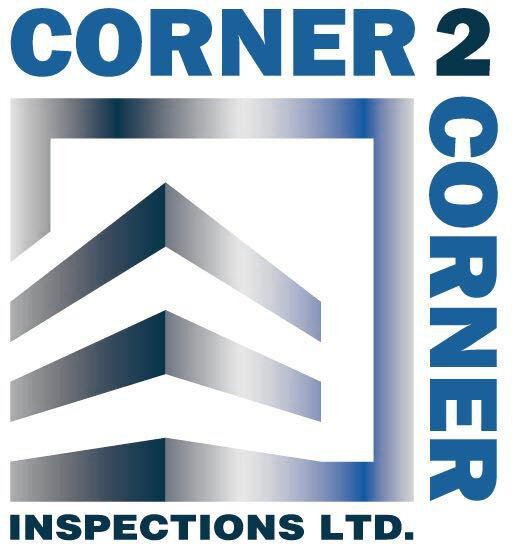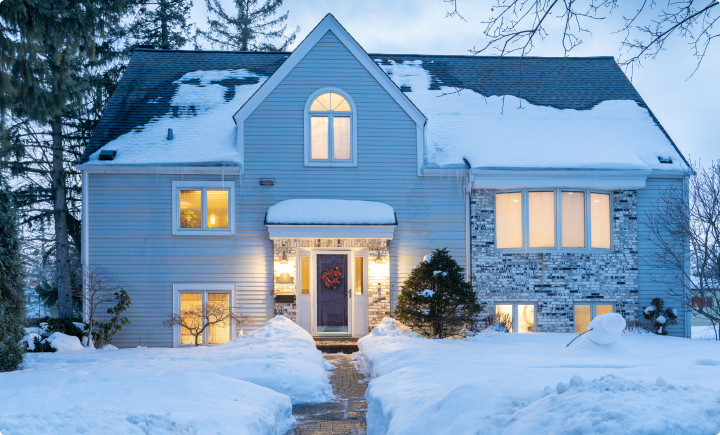Ice Dams
Ice dams are not something home owners want to see. They can lead to serious and expensive repairs if not corrected and they are absolutely preventable. A roof covering in good condition, proper attic venting, sealing and insulation will solve your problem.
What causes Ice Dams
Like any problem, you can’t fix it unless you know what the cause is, so let’s do a little CSI.
The Problem: Worst case scenario is melting snow from the roof formed icicles from your eaves and has entered your home in the form of water. You now have pretty icicles and damage to interior ceilings and/or walls, insulation and structure, maybe mold.
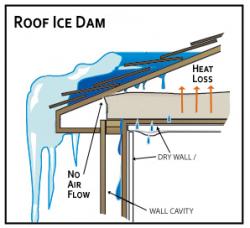
The Cause: The cause of the problem is water but where did it come from?
1. We all know water flows best downhill so the obvious place to look is up. What’s above you walls?
2. The attic. You may see some frost on the sheathing here. This is more likely caused warm moist air entering the attic from the living space below and doubtfully the cause of your problem. So, what’s above the attic?
3. The roof. Is there a water source here? Your bet, it’s all that snow but it has to melt first so what’s melting the snow and how is it getting into your house?
4. Heat melts snow but where is the heat coming from? Obviously the attic.
We have tracked the cause of our wows to melting snow on the roof caused by heat from the attic. Now what?
The Fix: The fix is not to heat the snow on the attic. But who heats their attic, no one right? Wrong, people with icicles and ice dams do.
1. Your goal is to keep your attic space the same temperature as it is outside of your house. Three conditions must exist for this take place; first the attic must be properly vented. Secondly, the attic must be properly sealed from the living space below and thirdly, it must be adequately insulated. You would be very wise to investigate and correct any of the conditions in the above order. It is more difficult to seal the attic floor or open up vents in your soffits after insulation has been blown over them.
2. Venting: Venting your attic removes any warm moist air which may be leaking in from your living space and hot air in the summer months. Good venting requires open soffit vents under the eaves and roof vents near the ridge of the roof. Air enters through the soffits, heats in the attic, rises and exits through the roof vents near the ridge.
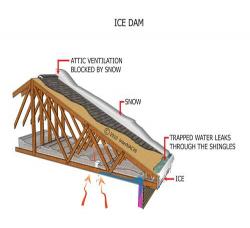
3. Sealing: This is a little more difficult. A good start is to install weather stripping around your attic hatch(s) so the hatch itself sits on the weather stripping. Other areas to look at are where recessed ceiling lights, fans, chaseways (chimney, plumbing chutes), bathroom fans pass through the ceiling and kneewalls.
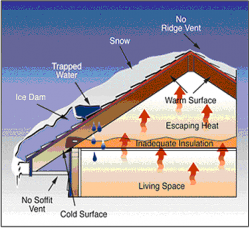
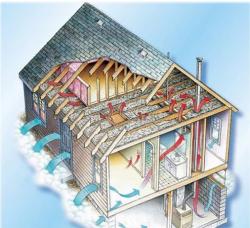
4. Insulation: R-40 is the current code requirement for Alberta, R50 is better. Insulation can be blown in over what already exists unless it zonolite or vermiculite that contains asbestos. There are different types of insulation and they have different R-values, meaning you may need 15 inches of one type and only 10 inches of another. Pay attention to how much room you have in your attic and choose accordingly.
Something else to consider…..the conditions that cause ice dams will also affect the occupants of the home year round. Inadequate insulation will allow hot air to penetrate into the living space in the summer time raising cooling bills or simply making the home too hot and uncomfortable. Also, without proper ventilation heat from the sun will heat up attic and cook the asphalt shingles from beneath. You’ll be lucky to get half the recommended life out of them.
